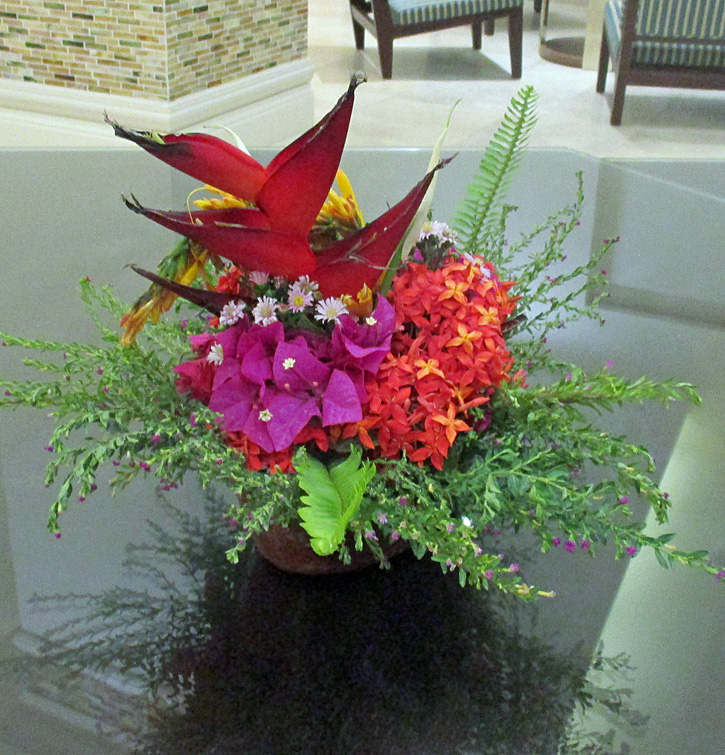Homecoming for Helenium
 Special to Road Trips for Gardeners
Special to Road Trips for Gardeners
By Mt. Cuba Center
Mt. Cuba Center, Hockessin, Delaware, has released “Helenium for the Mid-Atlantic Region”, a report that summarizes three years of evaluating 44 selections of the flowering perennial Helenium, sometimes called sneezeweed. Researchers at the botanical garden studied these selections and ranked the plants based on their floral display, health and attractiveness for pollinators and other beneficial insects.
View the full report here.
This perennial plant is popular as a border plant because of its height, eye-catching colorful flowers and self-sowing nature. Native to the Americas, it was brought into cultivation in Europe in the 18th century, where it has remained a popular garden plant.
“Helenium deserves a second look in American horticulture,” said Sam Hoadley, Mt. Cuba Center’s manager of horticultural research. “They are in bloom when gardens are in a lull, right at the end of summer and beginning of fall and they all contribute an extremely vibrant, bright, fiery color.”
Helenium is commonly called sneezeweed because of the historical use of dried and ground Helenium plant parts that were inhaled through the nose, not because the flowers themselves induce sneezing, which colonists used as a replacement for tobacco snuff.
Top performers include Helenium ‘Kanaria ‘and H. ‘Zimbelstern’, both of which were developed by renowned Dutch plant breeder Karl Foerster specifically to withstand dry soil conditions, which likely contributed to their success in the trial as Mt. Cuba Center’s Trial Garden has dry soil and full sun conditions.
Browse plants by performance score here.
 The plants were also evaluated for their horticultural value and attractiveness to pollinators, specifically bees and wasps which are essential to a functioning ecosystem. To determine the species and cultivars that attracted the most pollinators, Mt. Cuba Center’s Pollinator Watch Team, a group of more than 30 volunteers, maintained rigorous observational records of the Helenium included in the trial. Helenium autumnale accumulated the most observed pollinator visits (162), while H. ‘Zimbelstern’ attracted 151.
The plants were also evaluated for their horticultural value and attractiveness to pollinators, specifically bees and wasps which are essential to a functioning ecosystem. To determine the species and cultivars that attracted the most pollinators, Mt. Cuba Center’s Pollinator Watch Team, a group of more than 30 volunteers, maintained rigorous observational records of the Helenium included in the trial. Helenium autumnale accumulated the most observed pollinator visits (162), while H. ‘Zimbelstern’ attracted 151.
Mt. Cuba Center’s Trial Garden is maintained with the home gardener in mind. Plants are watered as needed during the first year in order to get them established, but afterwards they are left on their own. Pesticides are not used unless there is a serious threat to the entire trial’s survivability.
Other top performers include:
- H. autumnale ‘Can Can’
- H. ‘Flammenspiel’
- H. autumnale
- H. ‘Kugelsonne’
- H. ‘Tijuana Brass’
- H. flexuosum
- H. ‘Potter’s Wheel’
- H. ‘Flammendes Katchen’
With paths that take guests from the formal gardens of a du Pont mansion through stunning vistas, intimate woodlands, and lush meadows, Mt. Cuba Center is a botanical garden that puts the beauty of native landscapes on display to inspire conservation. What began in the 1930s as the private estate of Mr. and Mrs. Lammot du Pont Copeland is now a public garden that centers the beauty and value of native plants. In addition to cultivating the public garden’s formal and naturalistic landscapes, Mt. Cuba Center staff conduct research, connect guests to the natural world and teach students about native plant horticulture. Gardens are open for general admission Wednesday to Sunday, April to November. Classes are offered year-round.

(Photos courtesy of Mt. Cuba Center)







